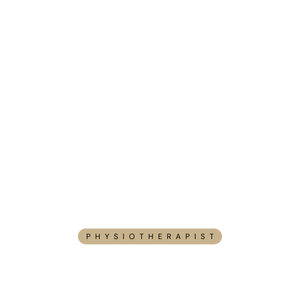Pelvic Health
Women’s & Pelvic Health Physiotherapy: Empowering You Through Every Stage of Life
Women’s bodies undergo incredible transformations throughout life—pregnancy, postpartum, menopause, and beyond—each phase bringing challenges that can impact physical health, function, and quality of life. Yet, many women are told that issues like pelvic pain, incontinence, painful intercourse, or prolapse are just “normal” and should be accepted.
I know firsthand how deeply pelvic health issues can affect daily life. After childbirth, I experienced persistent pelvic pain and functional limitations for months. Simple activities like walking, sitting, or carrying my baby became difficult.
It was in this journey that I truly connected with the reality that so many women face post-childbirth—a reality of pain, frustration, and feeling unheard. This experience deepened my passion for pelvic health physiotherapy and motivated me to specialize further in this field—not just to heal myself, but to help countless other women who are silently struggling.
But pelvic health isn’t just a women’s issue. Men and children also experience pelvic dysfunctions that affect their daily comfort, confidence, and quality of life—and they deserve expert care too.
Conditions I Treat: Women’s Pelvic Health
Bladder Dysfunction & Urinary Disorders
- Overactive bladder (OAB) → Frequent urination, urgency, and nocturia (waking up multiple times at night to urinate).
- Urinary incontinence (stress, urge, mixed, overflow) → Leakage during coughing, sneezing, laughing, or exercising.
- Bladder Pain Syndrome / Interstitial Cystitis (IC/BPS) → Chronic bladder discomfort, burning, urgency, and frequency, often mistaken for UTIs.
- Urinary retention & difficulty emptying → Weak or dysfunctional pelvic floor muscles affecting bladder control.
Pelvic Organ Prolapse
- Bladder (cystocele), uterus (uterine prolapse), rectum (rectocele) → Heaviness, bulging sensation, or discomfort worsened by standing or activity.
- Postpartum & menopausal prolapse symptoms → Addressing weakened pelvic support and core instability.
Chronic Pelvic Pain Syndromes & Nerve Entrapments
- Pudendal neuralgia → Burning, tingling, or stabbing pain in the perineum, vulva, or rectum, worsened by sitting.
- Genitofemoral, ilioinguinal, iliohypogastric nerve entrapments → Pain radiating into the lower abdomen, groin, or inner thigh, often after surgeries.
- Dysmenorrhea & endometriosis-related pelvic pain → Severe menstrual cramps, deep pelvic aching, and muscle spasms.
- Irritable bowel syndrome (IBS) & pelvic floor dysfunction → Bloating, constipation, diarrhea, and discomfort with bowel movements.
- Pelvic girdle pain (PGP) & sacroiliitis → SI joint, tailbone, or pubic symphysis pain during pregnancy or postpartum.
- Low back & hip pain related to the pelvic floor → Weakness, tension, or instability affecting movement.
Bowel Dysfunction & Digestive Issues
- Chronic constipation & obstructed defecation → Straining, difficulty emptying, or incomplete bowel movements.
- Fecal incontinence & rectal prolapse → Loss of bowel control or urgency.
Pregnancy & Postpartum Recovery
- Diastasis recti & core dysfunction → Abdominal muscle separation affecting posture and strength.
- C-section & perineal scar rehabilitation → Preventing adhesions, reducing tightness, and restoring sensation.
- Pelvic floor rehabilitation after childbirth → Addressing postpartum weakness, prolapse, or discomfort.
Menopause & Hormonal health
✔ Vaginal dryness, atrophy, pelvic discomfort → Addressing tissue health, circulation, and muscle function.
Post-Surgical Recovery
✔ After hysterectomy, C-section, prolapse repair, endometriosis surgery → Preventing complications and restoring normal function.
Men’s Pelvic Health
Men also experience pelvic pain, bladder dysfunction, and post-surgical complications, yet these issues are often ignored or misdiagnosed. We specialize in:
- Chronic pelvic pain syndrome (CPPS) → Unexplained pain in the perineum, lower abdomen, or groin.
- Post-prostatectomy rehabilitation → Bladder control, erectile function, and core recovery.
- Urinary urgency & incontinence → Post-surgical or age-related bladder control issues.
- Bowel dysfunction (constipation, fecal incontinence) → Improving muscle coordination for better bowel control.
- Coccydynia & pelvic nerve pain → Tailbone pain or neuralgia affecting daily life.
- Abdomino-pelvic surgery → surgeries as hernia repair or laparoscopy can benefit from pelvic floor rehabilitation.
- Groin pain→ either sport-related or not groin pain is a reality for many men, in this case pelvic floor physiotherapy is a crucial part of the recovery process.
Science-Based, Holistic Approach to Pelvic Health
Each treatment plan is highly personalized and rooted in clinical evidence, combining advanced physiotherapy techniques, movement therapy, and lifestyle strategies for optimal recovery.
Cutting-Edge Physiotherapy Treatments
- Neuromodulation & nervous system regulation → Treating chronic pain, overactive bladder, and nerve dysfunction.
- Ultrasound-guided therapy → Real-time imaging of pelvic floor muscle function.
- Biofeedback (EMG & ultrasound) → Teaching proper pelvic muscle activation and relaxation.
- Electrotherapy → Stimulating weak or overactive pelvic muscles.
- Hypopressive exercises → Strengthening deep core muscles while reducing intra-abdominal pressure.
- Therapeutic & functional exercises → Addressing postural alignment, strength, and movement efficiency.
- Manual therapy & myofascial release → Relieving pelvic pain, scar adhesions, and muscle tightness.
- Shockwave & laser therapy → Supporting tissue healing and circulation.
- Mind-body techniques → Breathwork, relaxation strategies, and nervous system regulation.
- Education & lifestyle counseling → Practical strategies for self-care, pelvic health, and recovery.
- Pelvic health products when needed → Vaginal dilators, pessaries, lubricants, and perineal massage tools.
Why Pelvic Health Physiotherapy?
- Regain confidence in your body after childbirth, surgery, or injury.
- Move freely—without pain, pressure, or leakage.
- Improve bladder, bowel, and sexual function with specialized treatment.
Women’s health is more than just pelvic floor exercises—it’s a full-body, evidence-based approach to lifelong well-being.
Men’s pelvic health matters too—chronic pain, bladder issues, and post-surgical recovery deserve expert care.
📅 Book an appointment today and start your journey to recovery.
Surgical Therapy
Pre- and Post-Surgical Physiotherapy: Safe Recovery, Return to an Active Life. We understand that surgery, whether planned or an emergency, comes with many questions and concerns. How long will recovery take? Will I be able to return to my normal activities? How can I avoid complications?
The good news is that pre- and post-surgical physiotherapy can make a significant difference in your recovery. It helps reduce pain, improve mobility, and prevent long-term complications.
No matter if it’s an orthopedic, abdominal, gynecological, urological, or laparoscopic surgery, each procedure presents unique challenges that we can address together.
Physiotherapy can help!
Before Surgery (Prehabilitation Physiotherapy)
Preparing your body before surgery is key to faster and more effective recovery. Research shows that good preoperative conditioning reduces hospital stay length and improves postoperative outcomes (Mayo et al., 2020).
- Optimizing respiratory function: Respiratory physiotherapy techniques help prevent lung complications, especially in abdominal and thoracic surgeries.
- Strength and conditioning: Improving muscle strength and cardiovascular capacity before surgery makes rehabilitation easier and faster.
- Pain and movement management: Learning movement strategies before surgery helps with adaptation and pain control afterward.
After Surgery (Postoperative Physiotherapy)
Every surgery is different, and so is every recovery. We create tailored plans based on your surgery, physical condition, and recovery goals.
✔ Pain management and swelling reduction: Techniques like lymphatic drainage, manual therapy, physical agents, and gentle exercises help control pain and inflammation after surgery.
✔ Scar rehabilitation: After abdominal, gynecological, or urological surgeries, treating scars with manual therapy, radiofrequency, and tissue mobilization helps prevent adhesions and improves mobility.
✔ Strength and mobility recovery: For orthopedic surgeries like joint replacements or ligament reconstructions, the focus is on safely restoring strength and function.
✔ Prevention of postoperative complications: In laparoscopic and abdominal surgeries, we work on breathing techniques, core activation, and postural retraining to prevent issues such as lower back pain or abdominal weakness.
✔ Returning to daily activities: From climbing stairs to getting back to sports, we design a personalized plan to help you regain confidence and avoid risks.
What Does the Research Say?
📌 A meta-analysis in British Journal of Surgery (2021) showed that post-surgical physiotherapy accelerates functional recovery and reduces complications in both abdominal and orthopedic surgeries.
📌 Pre- and post-operative respiratory physiotherapy has been proven to reduce the risk of lung complications in patients undergoing thoracic and abdominal surgeries (Scholes et al., 2019).
📌 A study in Journal of Orthopaedic & Sports Physical Therapy (2022) found that well-structured post-surgical rehabilitation improves mobility and reduces stiffness risk in orthopedic surgeries.
We Are Here to Support You Every Step of the Way
Everybody heals at its own pace, and our mission is to ensure that you recover in the best way possible. Whether your surgery was recent or you are preparing for one, we can work together to make your recovery faster, safer, and more effective.
🩺 Are you preparing for surgery or recovering from one? Let’s create a tailored recovery plan for you.
Oncologic & Lymphatic Physiotherapy
Moving Beyond Cancer: Restoring Function and Well-Being
A cancer diagnosis changes everything. While medical treatments like surgery, chemotherapy, and radiation are lifesaving, they can also lead to persistent physical challenges. Many individuals face fatigue, muscle loss, osteoporosis, lymphedema, neuropathy, pain, and limited mobility long after their initial treatment. This is where oncologic and lymphatic physiotherapy plays a transformative role—helping not only to manage symptoms, but also to improve quality of life and potentially even survival outcomes.
How Can Physiotherapy Help?
Cancer treatments can put a significant strain on the body, resulting in:
- Lymphedema (chronic swelling due to lymphatic dysfunction)
- Osteoporosis and sarcopenia (bone density loss and muscle atrophy from chemotherapy or hormonal therapy)
- Pain and chronic fatigue limiting daily activities
- Neuropathy (numbness, weakness, and balance issues from radiation or chemotherapy)
- Loss of mobility and function post-surgery or radiation
- Changes in body composition (weight fluctuations, fluid retention)
Physiotherapy focuses on targeted exercise programs, manual therapy, and tailored rehabilitation protocols to help patients regain strength, reduce discomfort, and rebuild confidence in movement.
Lymphedema: A Major Concern in Cancer Rehabilitation
What Is Lymphedema?
Lymphedema is a chronic swelling caused by damage to the lymphatic system—often linked to lymph node removal or radiation therapy. It can develop immediately after treatment or arise years later, leading to pain, risk of infections, and functional impairments if left unmanaged.
Where It Occurs
- Breast Cancer: Swelling in the arm, chest, or breast area following lymph node dissection or radiation.
- Gynecologic Cancers (e.g., cervical, uterine, ovarian): Lower extremity swelling due to pelvic or inguinal lymph node removal.
- Prostate Cancer: Lower limb or genital area swelling after prostatectomy or pelvic lymph node removal.
- Head and Neck Cancers: Swelling in the face, neck, or jaw when lymphatic drainage is compromised by surgery or radiation.
Lymphedema in Head & Neck Cancer
Surgeries for oral, throat, and thyroid cancers, as well as radiation treatments, can reduce lymphatic drainage in the neck area, causing:
- Swelling in the face, jaw, neck, or under the chin
- Difficulty swallowing or speaking due to tissue thickening
- Restricted neck and shoulder movement
- Increased risk of fibrosis and recurrent infections
How Physiotherapy Helps
- Manual Lymphatic Drainage (MLD): Gentle, specialized massage to stimulate lymph flow and reduce swelling.
- Compression Therapy: Bandaging and custom-fitted garments to manage fluid accumulation.
- Neck and Jaw Exercises: Focused mobility work to prevent stiffness and maintain function.
- Neuromuscular Retraining: Techniques to restore swallowing and speech abilities.
Lymphedema After Breast, Gynecologic, or Prostate Cancer
- Upper Limb Lymphedema (Breast Cancer): Arm and chest swelling can be addressed with MLD, compression sleeves, and exercise programs designed to improve shoulder mobility.
- Lower Limb Lymphedema (Gynecologic/Prostate Cancers): Compression stockings, targeted leg exercises, and manual drainage help manage fluid buildup in the legs and pelvic area.
A Holistic Approach to Recovery
Physiotherapy does more than relieve swelling:
- Exercises improve muscle strength, balance, and endurance.
- Pain management strategies reduce discomfort and enhance daily function.
- Education on posture, ergonomics, and activity pacing supports long-term self-care.
If you are currently undergoing cancer treatment or experiencing post-treatment complications, oncologic and lymphatic physiotherapy can be a key component of your recovery. By addressing lymphedema, rebuilding strength, and enhancing overall well-being, it empowers you to reclaim an active, fulfilling life. You don’t have to face these challenges alone—reach out and get the support you deserve.
Dermato-Functional Physiotherapy: Skin, Scars, and Recovery
Surgery, Weight Fluctuations, and Aging: Optimizing Skin Health and Recovery
Whether you’ve undergone plastic surgery, a C-section, an oncological procedure, or an abdominal surgery, dermato-functional physiotherapy helps optimize healing, reduce swelling, improve scars, and restore tissue elasticity.
How Can It Help?
- Scar Therapy: Manual therapy, deep tissue mobilization, laser treatments, and microcurrents reduce fibrosis, improve elasticity, and minimize hypertrophic or adhered scars (Zinberg et al., 2022).
- Swelling and Lymphedema Management: Surgeries like liposuction, mastectomy, or abdominoplasty often cause fluid retention. Lymphatic drainage and compression therapy help accelerate reabsorption and reduce swelling (International Lymphedema Framework, 2021).
- Post-Liposuction and Abdominoplasty Recovery: Techniques like manual therapy, ultrasound, and radiofrequency improve tissue adherence, skin tone, and definition.
- C-Section and Abdominal Surgery Recovery: Scar mobilization, strengthening exercises for abdominal wall rehabilitation, and visceral therapy restore abdominal function, reduce adhesions, and prevent lower back pain (Wright et al., 2019).
- Skin Health and Regeneration: Technologies like diathermy, deep oscillation, electrotherapy, negative pressure, and massage stimulate collagen production and promote better healing (Araujo et al., 2021).
Sports and Musculoskeletal Physiotherapy
Recover, Move Better, Come Back Stronger
I know firsthand how frustrating and life-changing an injury can be. As someone who had to abandon a sports career due to an ACL injury, enduring the tough phases of rehabilitation and even failed surgeries, I deeply understand the emotional and physical toll of this process.
The uncertainty, the setbacks, the feeling that your body isn’t responding the way it used to—it’s overwhelming. But what I also learned through my own journey is that recovery is possible, and you don’t have to go through it alone. Sports and musculoskeletal physiotherapy is designed to help you heal safely, prevent reinjury, and optimize your performance so that you can return to doing what you love with confidence. Whether you are an athlete, a fitness enthusiast, or simply someone who wants to move without pain, I am here to guide you with both professional expertise and personal experience.
How Can Physiotherapy Help You? Personalized Treatment for Every Injury
- Every injury is different, and so is every recovery. That’s why I create personalized treatment plans that address not just the pain but also the underlying causes and long-term prevention. Some of the most common conditions we treat include:
- Muscle injuries: Tears, strains, or muscle overload can affect your daily life and performance. We use manual therapy, guided stretching, and progressive strengthening exercises to ensure optimal healing.
- Ligament injuries: Whether it’s an ACL tear, ankle sprain, or shoulder instability, we guide you through each rehabilitation phase, focusing on stability, strength, and safe return to activity.
- Joint pain and wear-and-tear injuries: Knee, shoulder, and hip pain can arise from overuse, poor biomechanics, or degenerative conditions. Our approach helps restore mobility, reduce pain, and strengthen stabilizing muscles.
- Injury prevention and performance optimization: If you’ve experienced an injury before or want to reduce your risk, a biomechanical assessment and corrective training can be the key to longevity in your sport.
Science-Backed, Technology-Driven Approach
I don’t believe in quick fixes or generic treatments. Having personally faced a long and challenging rehabilitation process, I know the value of a well-structured, evidence-based recovery plan. That’s why my approach integrates:
Clinical reasoning and advanced assessment techniques → To identify the root cause of your pain and dysfunction.
Cutting-edge technology → When needed, I use ultrasound imaging, motion analysis, EMG biofeedback, and dynamometry to precisely assess muscle activation, joint stability, and movement efficiency. Additionally, physical agents such as electrotherapy, neuromodulation, and diathermy can be game-changers in your recovery process.
- Progressive rehabilitation programs with targeted exercises → Essential for full recovery after muscle and ligament injuries (Hickey et al., 2020).
- Well-designed injury prevention programs → Can reduce the risk of sports-related injuries by up to 50% (Kaux et al., 2015).
Recovery Is a Journey—And I’ll Be With You Every Step of the Way
I know what it’s like to feel frustrated, uncertain, and even hopeless during the rehabilitation process—but I also know that the right approach can completely change your recovery and future performance. My mission is to help you regain not just your movement, but also your confidence in your body’s strength and resilience.
If you’re struggling with an injury or want to prevent future setbacks, let’s work together to create a recovery and performance plan tailored to you.
📅 Book a session today and take the first step toward moving pain-free.



